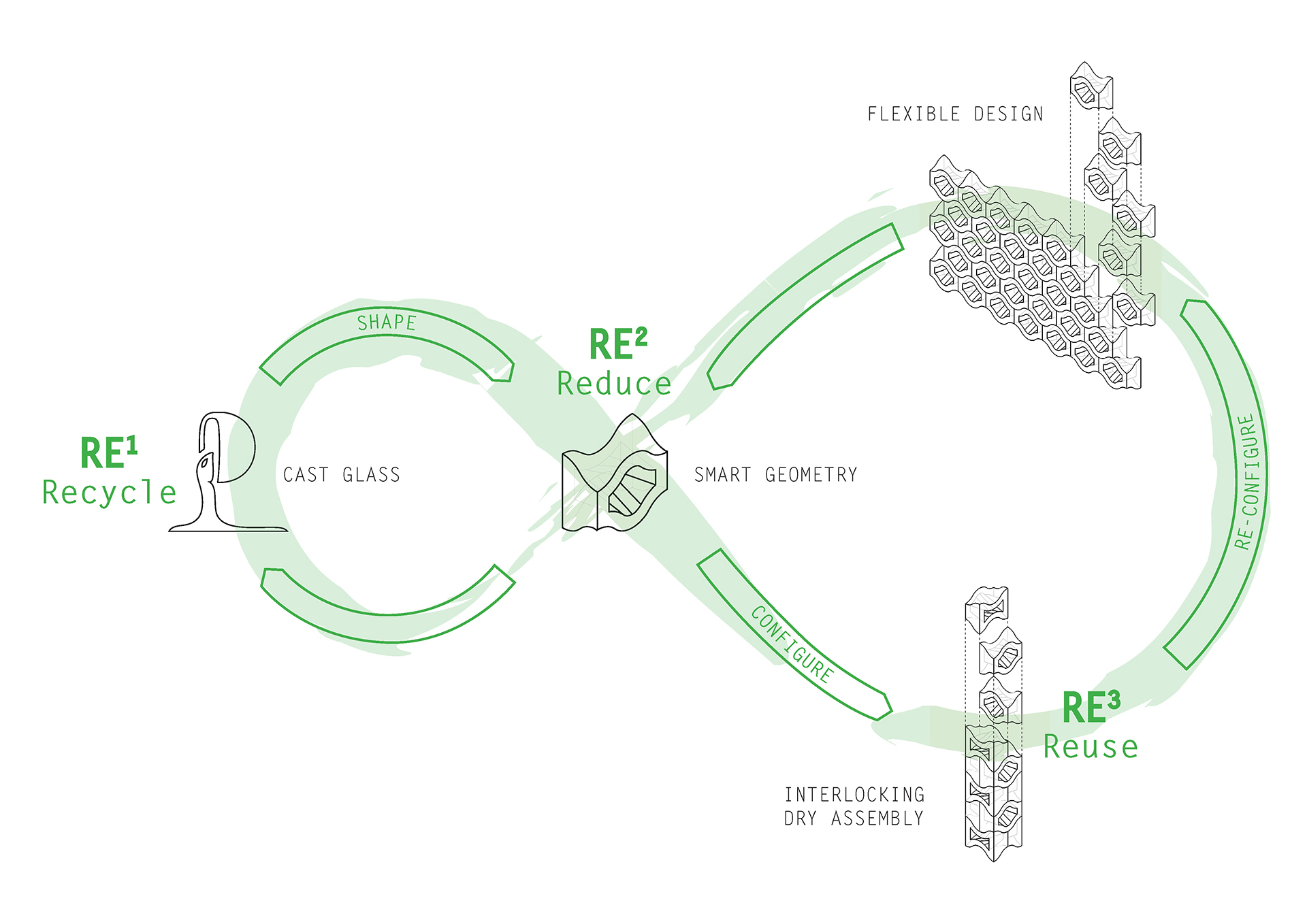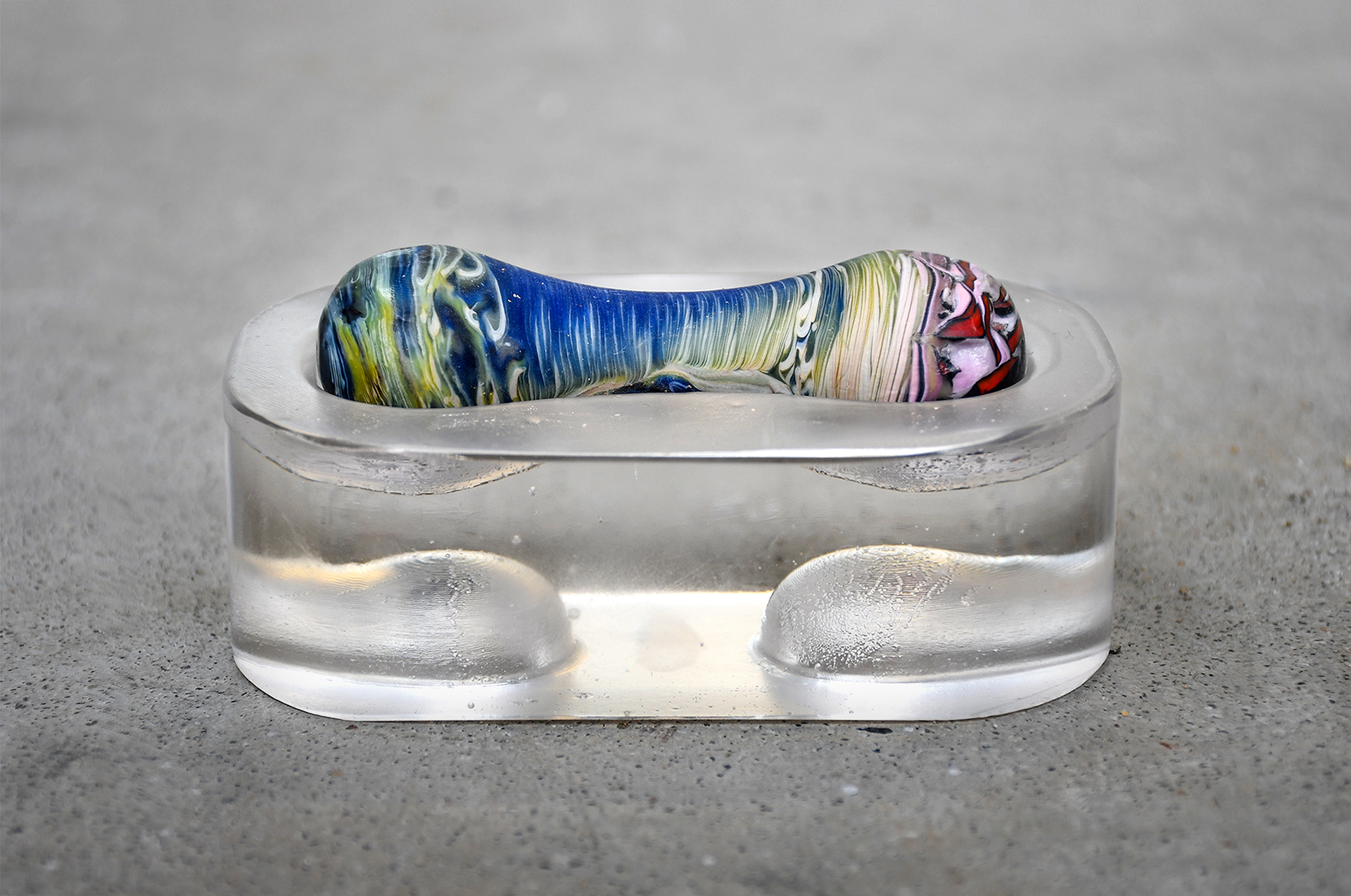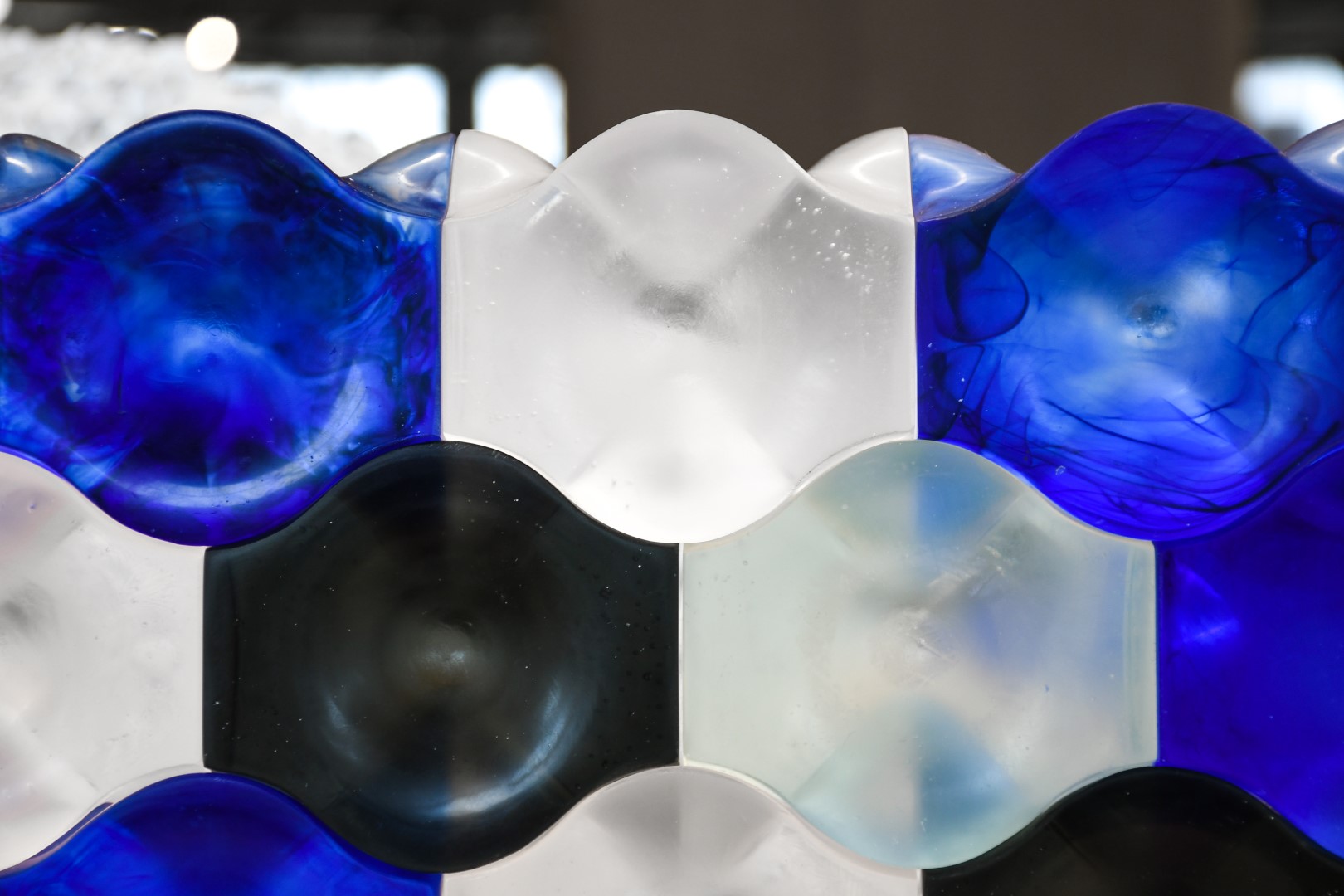Re3 Glass
A Reduce, Reuse, Recycle strategy for a dry-assembly building system out of waste glass
Although glass can take almost any shape and colour envisioned, in the field of structural glass, the material is mainly conceived as a 2D transparent element. Escaping this two-dimensionality, the Crystal Houses Façade in Amsterdam, designed by MVRDV and developed by the TU Delft structural glass research group, proved the architectural and structural potential of cast glass in creating three-dimensional, robust and freeform all-glass structures. The Re3 Glass project continues in this path, enhancing the system’s sustainability performance and tackling previously faced challenges such as the excess material use, the permanent bonding & the non-recyclability of glued components. For the casting of the components, waste glass is employed.

Currently, despite the common notion that glass is 100% recyclable, the majority of everyday discarded glass objects are neither reused nor recycled. In fact, recipe mismatching or contamination from coatings or adhesives result in the down-cycling or disposal of otherwise topquality glass. Through the project, everyday glass waste, from Pyrex® trays and artware, even mobile phone and computer screens, are redirected from the landfill to the building sector. In addition, cavities and notches are introduced to the design, to achieve lightweight yet strong components and reduce the required material and CO2 emissions during production and transportation. Finally, the developed interlocking shapes result in a stable and stiff system, while circumventing the use of adhesives. This allows for easy assembly and disassembly, and favours the reuse and recyclability of the components.

Following this threefold approach, experiments at the TU Delft Glass Lab with different geometries, glasses and cooling techniques, have resulted in a wide range of clear, coloured, translucent and opaque, marbled glass elements that can form circular, strong & aesthetically intriguing structures.
The project was nominated for the New Material Award 2018 and exhibited at Venice Design 2018, Dutch Design Week 2018, Milan Design Week 2019 & Vitra Schaudepot.
Facts
| Funder: | 4TU. Bouw |
| Programme: | Lighthouse grant |
| Overall budget: | € 50.000 + material sponsorship |
| Grant amount: | € 50.000 Contribution to TU Delft: € 46.000 |
| Grant number: | 4TU. Bouw Lighthouse 2017 |
| Role TU Delft: | Lead partner |
| Project duration: | January 2017 - Ongoing |
| TU Delft researchers: | Dr.ir. Faidra Oikonomopoulou Ir. Telesilla Bristogianni Dr. Fred Veer Ir. Rong Yu Ir. Lida Barou Ir. Tommaso Venturini |
Project partners
University of Twente, Southern Illinois University
